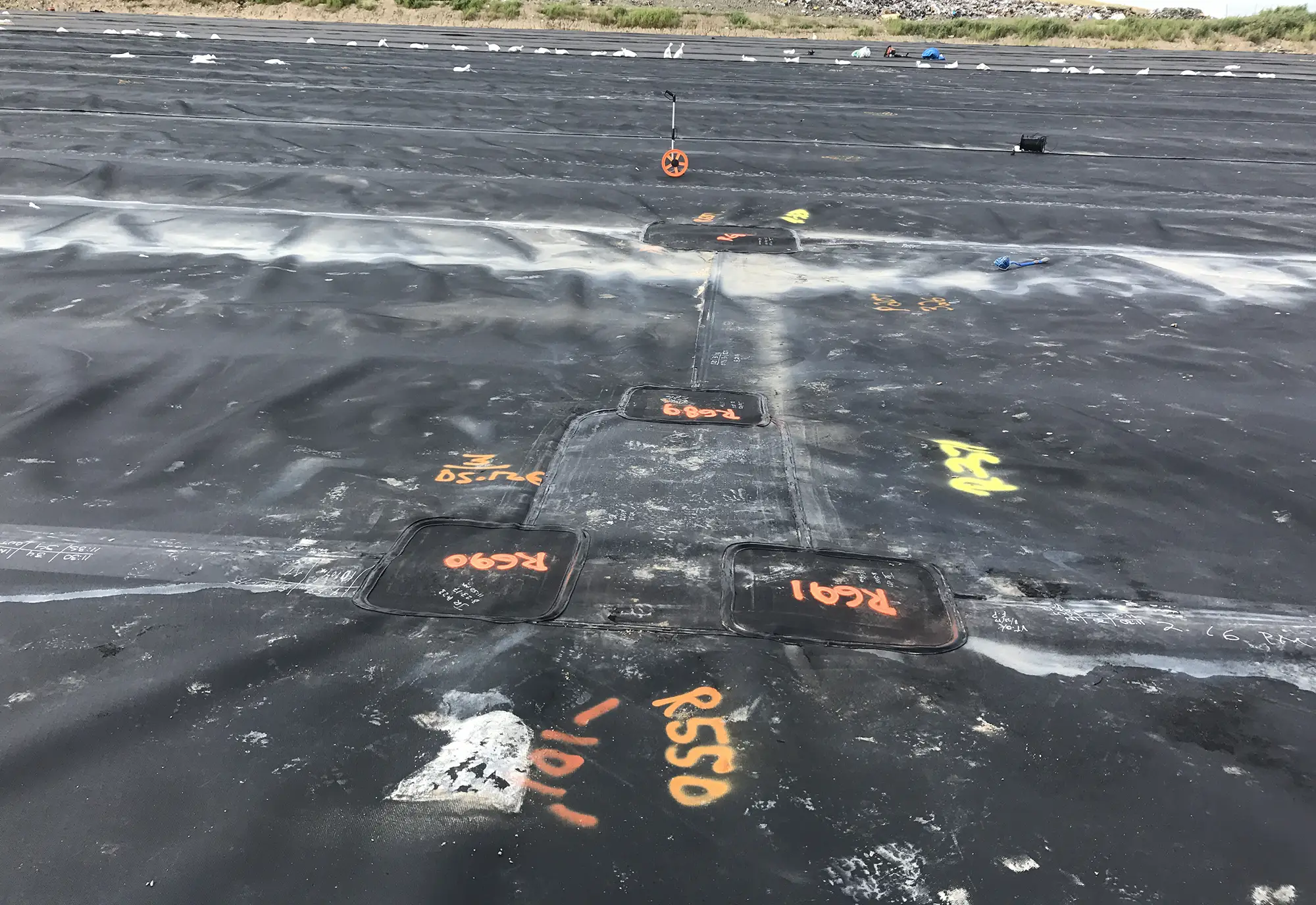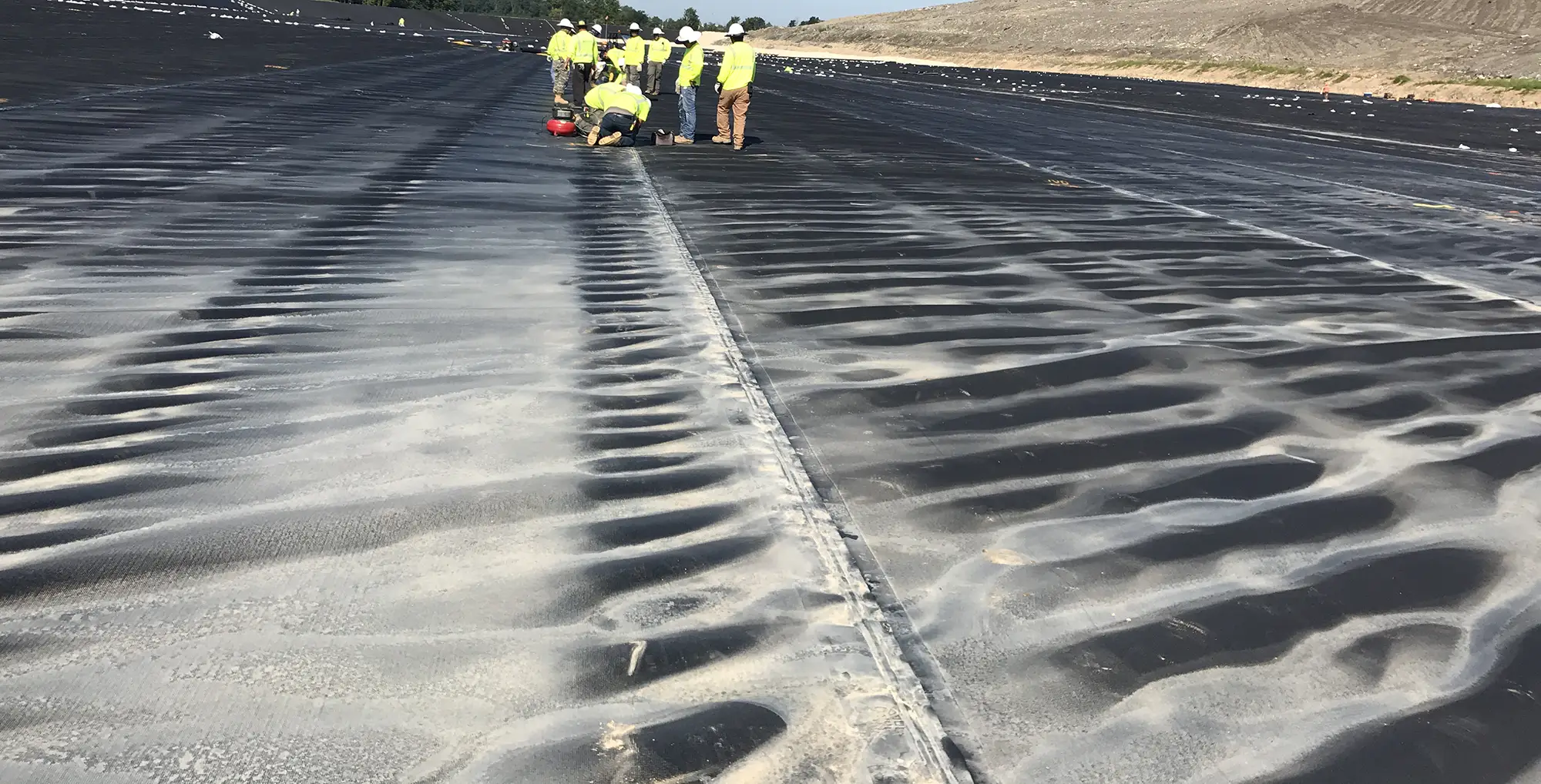Everybody remember when you had to read through a scenario and then answer questions at the end?
Well, there’s a bit of reading to this one followed by three questions at the end.
If you’re like me, you’re probably asking what caused this mess and why did it happen?
Well, let me fill you in. We were working on a bottom liner about ten-acres in size and on Friday the installer confirmed their plan to work Sunday on finishing air pressure testing, working on repairs, and possibly some vacuum testing in the afternoon. Based on the stated activities and sequencing, a decision was made to have one CQA person cover the Sunday work – that person would be me.
Sunday
I showed up on the project on Sunday morning a half-hour before designated starting time. Surprise – there is a second installer trailer in the project laydown area, with another crew of 12 or 13 supplementing the same size crew that has been working on the project. No notice. The Certifying Engineer (CE) says to “do the best I can by myself” – no one else was available to assist based on the Friday planning. I believe I’m good at what I do and catch things many miss, but performing quality CQA on one crew by yourself is tough, if not impossible (depends on the crew), and two is impossible (well, I guess that depends on your definition of quality CQA). I wasn’t allowed to intervene in any manner (e.g. tell the installer they could not simultaneously perform multiple tasks needing to be monitored).
At around 10:30 am, I caught the second installation crew cheating on air pressure tests on a floor/floor tie-in welded by dual track wedge that spanned nearly 400 feet across the cell width. Of course, the foreman called me a liar and insisted his technician told him during questioning that he was properly testing. The fact is, perhaps he was doing what he was taught – we had to train the initial liner crew of how to properly do air pressure tests – they’d write “30” for their starting air pressure test for basically anything other than “30”; same for the ending pressure. Once we had trained them, they did a good job. It’s not the responsibility of the CQA technician to train the installation technician, but sometimes it helps move the project along, especially when you are short-staffed.
I demanded that this floor/floor tie-in seam be retested in its entirety. The installer stormed off like Marvin The Martian from Bugs Bunny.
With a bit of reluctance, the CE backed me up on this call and the installer was forced to retest the tie-in seam. In looking at my paperwork, I noticed that the cheating installation technician had also air pressure tested twenty other seams not associated with the floor/floor tie-in seam prior to and after being caught (installer allowed him to keep testing until the CE made the retest decision, which took a while given it was a Sunday) and I wanted to retest all of those seams as well. The CE had me retest 1/3 of those seams (7) which I could select. I walked all the seams, looked at the paperwork, and picked 7 seams for retesting, some up to 400 feet long, and informed Marvin (my nickname for the installation foreman) which seams needed to be retested. He looked at me like I was crazy, perhaps hoping his boss would intervene on Monday.
Monday
The installer retests the tie-in, with most seams failing and the small passing segments aren’t worth the effort of leaving. I suggested fusion welding the resulting long cap repair to improve the quality of the repair, but extrusion welding was ultimately chosen. When I see the installer start to position pieces of the liner cap material, I again inform the foreman of the need to get the air pressure retests done on any seams that butt up to the floor/floor tie-in. The installer ignores this request and the crew spends most of the day on the long extrusion cap. I also informed the CE of my concern but he doesn’t want to intervene and states that we can’t tell the installer how and when to repair something. At least I was allowed a second CQA technician for the remainder of the week which aided in keeping an eye on all the chaos throughout the day (there were multiple issues such as tracking failing destructive samples). The second crew was a complete disaster and didn’t seem to communicate much with the first crew.
Tuesday
I question the installation foreman at the tailgate meeting about the air pressure retests. He says the crew will be working on repairs throughout the remaining floor this morning and is hoping to finish them. I told him he should get the air pressure tests done before we put repairs down. I also informed the CE of my concern but he doesn’t want to intervene. Nearly all of the intersections, destructive seam sample holes, and ancillary repairs are completed, but not the air pressure retests.
Wednesday
The installer finally does the seven air pressure retests. Because all of the seams have repairs on intersections and destructive test locations, new holes and seals need to be created to do this testing. One of the seams had an issue of a very narrow air channel that made air pressure testing extremely difficult but after several hours, the seam successfully passed with a couple of new cuts made to facilitate testing the narrow track. Repairs were subsequently performed, as shown in the photograph. I suggested to the installer that they remove the original repair and make one large extrusion repair (or even fusion weld the large repair) with my rationale being to eliminate extrusion welds crossing over each other and concentrated reheating. The installer refused, and the CE told me his hands were tied because there was nothing addressing this concern in the construction documents. Thus the repairs were performed as shown, and ultimately approved.
This installation crew and the quality thereof has been a catalyst for many of my industry blogs, webinars, papers, and such! The poor quality depicted in this picture (as well as numerous other photos/videos you’ve seen) should never have happened and should never be allowed to happen!
So, how do we stop it??!!
3 follow-up questions – the second question is more of a poll as I am curious to your opinion, but I’ve provided my answer for comparison and will explain later:






